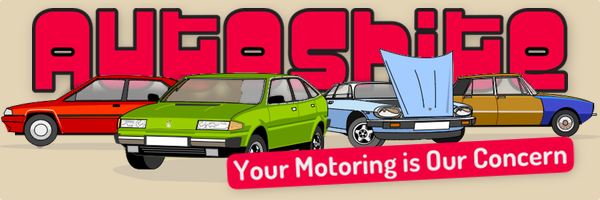
Mr Pastry
Full Members-
Posts
2,140 -
Joined
-
Last visited
Content Type
Profiles
Forums
Events
Everything posted by Mr Pastry
-
Can't remember the details now, but there was a slight difference. Pretty sure it was better with hood up - maybe 0.63.
-
To which should be added Caterham Seven, 0.65, but of course it has a very small frontal area.
-
AIUI the RM airport coaches were geared for 70 mph. If they would really do that on the standard engine - 115bhp? - they were more aerodynamic than you might think.
-
Frontal area I have just assumed max height x max width. The air coming from the front hits all of it somewhere, and not much will go underneath. Cd is more complicated and depends on how slippery the shape is, including how the air breaks away behind, so the shape of the tail matters. Cd can often be improved significantly by attention to detail - deleting things like roof gutters and external mirrors. I don't think a trike is necessarily worse than a 4 wheeler.
-
Just on a quick look at the calculator, taking Cd = 0.4, frontal area = 20 sq ft, weight = 500kg, 70mph requires 20.3 hp. which seems about right. Then 92mph requires 44.2 hp.
-
Have you tried the calculator I posted earlier? Frontal area I reckon 20 or 21 square feet, take the Cd as 0.34 initially, and you can play around with the numbers and relate power to maximum speed. http://www.stealthmotorsport.co.uk/horsepower.html
-
To give credit where due, I am sure that AC designed the model 70 responsibly and knew what they were doing, and they would have tested the maximum speed. And they would probably have geared it so that it ran out of steam before it became uncontrollable.
-
Yes quite right, but you also need to know the frontal area and the drag coefficient as it is all about air resistance. Horsepower & Aerodynamic Drag Calculator (stealthmotorsport.co.uk)
-
I'd be surprised if it is any faster than a Fiat 126, which has almost the same frontal area and a bit more power. Seriously, how well is it going to stop from 70+ with one SLS front brake? I think that is a cause for concern.
-
It looks like a special flywheel to me, drilled for clutch shoe pivots and no ring gear so presumably Steyr Puch would fit what the customer wanted. And it is pictured on the engine shown in the the Mod 70 manual.
-
Not studied it, but I think with a CVT, especially with a relatively small engine, you would have to try and tune the engine for torque and flexibility rather than top end power.
-
Possibly because CVT rather than manual? But FFS find something more important to worry about.
-
I think if the carbs were not generally interchangeable between different mod 70 engines the service manual would say so. It may even be the case that Weber supplied a batch of whatever they had in stock at the time which was within spec. You are dealing with a worn engine, with a different blend of fuel, and different ignition timing, to what it was designed for, so none of those carb specs may be exactly right for it. If it starts easily and runs well, with reasonable fuel consumption, that is about the best you can do. You may be able to find a little more power or economy by swapping carbs, but it won't be startlingly different, so if it ain't broke, don't fix it basically. Remember that the carburettor doesn't pump fuel in. It simply responds to the suction of the engine. The jets have to be considered as a matched set, to provide the correct mixture at all throttle openings, and changing just one of them won't necessarily have a good outcome. If you want to get into the theory then "Tuning Weber Carburettors" by John Passini. It is not a 5 minute read. Tbf it deals more with the sports/racing types and it's an old book now, but it does show how complex the subject is. Btw did you manage to source a kingpin kit?
-
1963 Mercedes Benz 190DC Fintail. First start 2024.
Mr Pastry replied to Dyslexic Viking's topic in AutoShite
It's assumed that it will earth through the casing. -
1963 Mercedes Benz 190DC Fintail. First start 2024.
Mr Pastry replied to Dyslexic Viking's topic in AutoShite
A -
1963 Mercedes Benz 190DC Fintail. First start 2024.
Mr Pastry replied to Dyslexic Viking's topic in AutoShite
Found this on a quick Google of "alternator wiring diagrams". It looks like you may need a relay for the charge warning light but I think it's safe to assume that the markings on the terminals are the same as yours. -
This may not help, but are you sure you have the replacement main relay connected the same way as the original? This doesn't make a lot of sense. From what I can see, not having the book in front of me, applying 12v across A and B should cause the relay to click and that will connect C to D. If so, looking at the sockets which the relay fits into, C=30 which should be permanently live - test it to earth with a test lamp or voltmeter. and D=87 which is the output. Bridging sockets C and D with a loop of wire should provide power to the second relay.
-
Dont know, but aren't the inner panels part of the structure?
-
Yes I think the costs are usually justifiable though, and many enthusiasts don't understand the difficulties involved in reproducing mass-production parts on a small scale. So you design and make this stuff and just about cover your costs, and they say it's too expensive, or not as good as the original. There's another side to it as well. Some enthusiasts aren't truly happy unless their car is broken. If it's not broken then they will find a way of breaking it. And if it is broken already they will find ways of not being able to mend it. So they'd rather whinge about not being able to get (for example) kingpins, instead of doing something about it. I'd make all those kingpin bits from scratch if I needed them myself, but CBA doing it for anyone else.
-
Well its not my problem anyway, it will be interesting to see what gets done about it.
-
They are thrust washers, made of fibre apparently. I guess the radius is just to aid fitting, I can't see any other reason for it. So plain washers plus shims would probably work. I have in mind a similar design of kingpin which might be adaptable, but it's just a guess without knowing the dimensions. IIRC there are believed to be manufacturing drawings in existence, but nobody gets to see them.
-
No, but it still has to be roadworthy. I think an MOT is a wise precaution on something as conspicuous as an invacar. You are probably going to get pulled out of curiosity if nothing else, and it might save a few arguments. Oh, and Araldite is better than body filler, apparently.
-
Good to have a picture, and it is similar to lots of others, but of course can't match it up without dimensions. I know what it says in the manual about the kingpin, but it isn't always like that in real life. Often difficult to get things apart, if it has been in there for ever. Then the new parts do not always fit properly for various reasons, the pin can be too loose or too tight, especially with pattern parts, so it can be quite a frustrating job.




